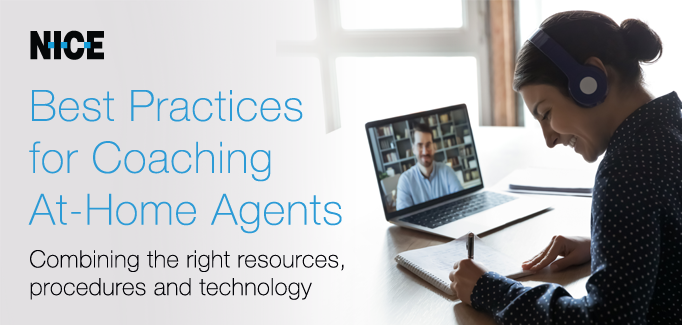Now that work-at-home (WAH) agents are a “thing” for many contact centers, leaders are looking for practices to enable them to achieve their goals. It’s a two-sided opportunity – contact center leaders and supervisors are looking for practices that will empower their agents to deliver an outstanding customer experience (CX). At the same time, management needs practices that will keep their agents up-to-date and engaged, even though they are working from their homes.
In many contact centers the quality management (QM) and training teams work closely together and, in some cases, these two functions report to the same manager. This approach helps facilitate cooperation and sharing of resources and information about agents. The training team plays an essential role in onboarding new agents and introducing them to the company and contact center. When the initial new-hire training is complete and agents are ready to begin handling interactions, the trainer, supervisor and QM specialist should function as the “welcome committee,” helping to acclimate agents to their role and responsibilities and making them feel supported. These three teams should be checking to make sure every new agent has the skills to do the job, knows where to look up information, and can easily access assistance, when necessary.
For this to work smoothly, companies need a combination of the right resources (trainers, QM specialists and supervisors), procedures and technology. While the goal is always the same – i.e., to help agents be well-trained, supported and engaged so they are confident and can deliver an outstanding CX – the technology makes a difference. In contact centers with a traditional QM solution, the following best practices help with properly coaching agents, regardless of where they are based, in the office or at home.
- Use a cloud-based QM/recording application that has remote call and screen monitoring capabilities. It should come with the ability to live-monitor agents, and to record, retrieve and replay voice and digital interactions (calls, emails, chat sessions, SMS, etc.). The QM/recording solution should also allow management to create agent evaluations easily and send them to employees for their review and response via a workflow.
- Provide regularly scheduled QM evaluations, feedback and coaching sessions to agents, highlighting both strengths and opportunities.
- Include a module in the new-agent training program that explains all aspects of the QM program, including the performance criteria for which they will be evaluated.
- Use real-time balanced scorecards and performance dashboards to allow agents to see how they are doing relative to their peers and personal goals.
- Use a gamification module to motivate, engage, recognize and reward agents for performance-driven results. Coaching and eLearning sessions can be gamified; successfully passing quizzes associated with coaching assignments can be used as the basis for earning points, badges or access to games in a gamification application.
Companies that have invested in analytics-enabled quality management (AQM) solutions will be able to “up their game” and more fully automate the coaching process. Here are some best practices that contact centers with AQM solutions should use to coach their at-home agents.
- Select an AQM solution that comes with an integrated coaching module to automate the identification and delivery of coaching feedback for each evaluation form and/or recorded interaction.
- Use the AQM solution to evaluate a statistically valid number of interactions for the contact center and each agent, and then identify the most significant coaching opportunities by channel and agent.
- Use the AQM solution to identify coaching opportunities for the department in order to improve the new-agent training program.
- Use AQM to identify and deliver targeted coaching; these sessions should be triggered automatically by low QM scores or customer feedback results and delivered to agents immediately following the transaction.
Coaching has always been essential for the health of the contact center and agents. Now that employees are working from home, it must be prioritized, as it’s one of the most effective methods for keeping agents engaged and invested in their job so they can deliver an outstanding CX.



